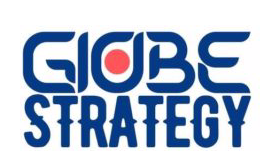International production, trade and investments are increasingly organised within so-called global value chains (GVCs) where the different stages of the production process are located across different countries. Globalisation motivates companies to restructure their operations internationally through outsourcing and offshoring of activities according to the OECD. According to UNCTAD, the rise of the global value chains (GVCs) is reshaping the whole structure of worldwide trade flows. It is no longer true that all, or even the bulk of the value of a country’s exports can be assumed to be domestically produced. GVCs also contribute to the development of individual economies, creating jobs and value added country based activities. However, participating in global value chains does not automatically improve living standards and social conditions in a country (World Bank, 2017).A critique of mainstream and critical versions of Global Commodity Chain analysis has looked at the effect of nationalism and global value chains and the effect of low cost labour inputs on country competitiveness.
Institutional environments and governance do play an import role in GVC effectiveness.
The value added by each country in the production of goods and services that are consumed worldwide can be accessed using Trade in Value data from the OECD as well as country specific statistical profiles from the WTO.These statistical profiles show the value-added content in an economy’s exports, its participation in global value chains and the contribution of services to the value-added content of exports. They also cover trade in intermediate goods and services, trade facilitation and foreign direct investment. The OECD has produced a 2016 EDITION OF TIVA INDICATORS (1995-2011) that can accessed online as well as downloaded as a. XLS file.
The UNCTAD-Eora GVC Database – part of UNCTAD’s FDI-TNCs-GVC Information System – provides new perspectives on trade links between economies, on the distribution of value added, income and employment resulting from trade, on the investment-trade nexus and on how transnational corporations (TNCs), through equity and contractual modes, shape patterns of value added trade.
Useful Resources
Tracing the Value-added in Global Value Chains: Product-level Case Studies in China . Read it here
Implication of Global Value Chains for Trade, Investment, Development and Jobs. Read it here
Some global value indicators can be accessed here
Making Global Value Chains Work for Development is a world bank book
The governance of global value chains– an article that builds a theoretical framework to help explain governance patterns in global value chains
An overview of the key concepts and methodological tools in GVC can be accessed here and is a very introduction to the concepts
Global value chains in a changing world- its risks and effects in Emerging Markets can be accessed here


